Content marketers face two main problems: driving traffic and converting customers.
Few things are more discouraging than sweating over a blog post that gets totally ignored. The only thing worse is being able to drive traffic, but failing to convert visitors into customers.
Both problems signal that something is broken in your content marketing.
The good news is there is a framework that will both build an audience and patch up your leaky funnels: it’s called the “content core.” This framework is simple enough to put into practice by the time you’re done reading. And it’s powerful enough to create significant distance between yourself and your competition.
How, you ask?
By connecting the dots between what your customers care about and the value your business provides.
To make content marketing the right path for driving revenue for your business, find your content core, and never deviate from it.
What is the Content Core?
So, what is this magical content core?
Visually, it’s best represented by two overlapping circles.
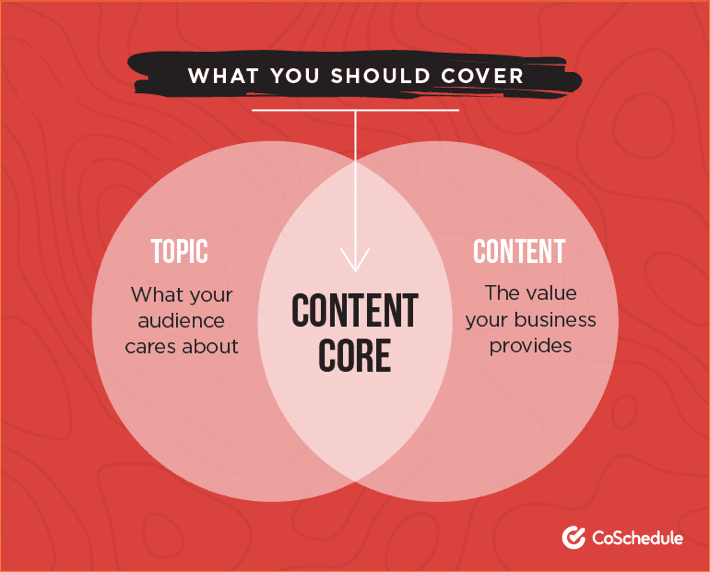
Sitting side-by-side, the circle on the left represents the content your audience cares about. The circle on the right represents the value you provide as a business.
The place where the circles overlap is the content core, and is the bullseye of your content strategy.
This is content that aligns with your audience’s interests while simultaneously generating demand for your product or service.
This framework comes to the rescue of content marketers who struggle to either drive traffic or convert traffic. And I call these two fundamental problems the traffic trap and the promotional trap.
Let’s Defeat the Traffic Trap
The sites that drive traffic have content their audience is looking for. But creating the right kind of content is paramount to creating customers.
The traffic trap is creating content your audience cares about, but ultimately fails to convert traffic into customers.
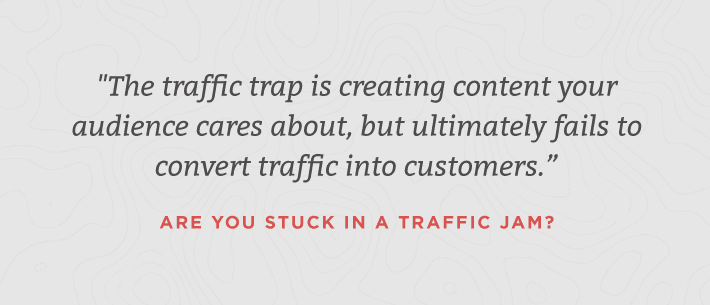
The danger is that web traffic becomes a false signal. Increasing traffic looks like a positive sign—but revenue doesn’t increase proportionally.
Let’s Defeat the Promotional Trap
This trap is creating a constant barrage of promotional content that fails to connect with your audience’s needs, pains and interests.
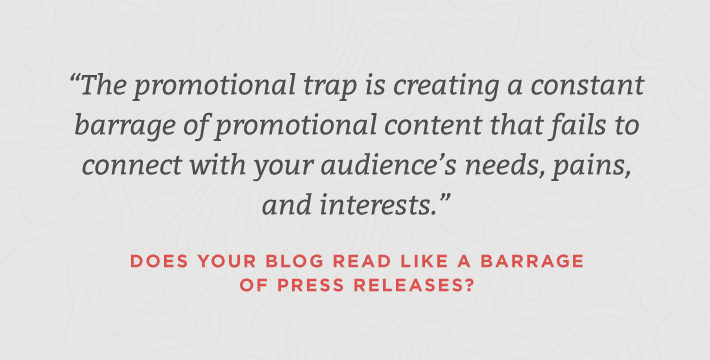
The danger with this “me-centric” content is that it adds little, if any, value to an audience. This will fail to generate traffic, and no traffic means no conversions.
So, what’s a savvy content marketer to do?
Identify Your Parallel Content Topics
It’s time to find your content core and create content that intersects what your customers care about and the value your company’s products or services offer.
It’s magic is that it clarifies what to prioritize for any brand’s content marketing strategy.
Finding your content core is like applying guardrails. It helps you avoid either extreme that hamstrings growth.
I loop both traps into something called “parallel content topics.”
It’s parallel because that’s exactly what results you’ll achieve: parallel to last year’s (even if they do bring traffic).
The perfect place to start is by diagnosing what kind of content you’re creating right now.
The stuff that converts will use angles that intersect with customer interests and business interests. However, most marketers settle for what we call parallel content topics.
Parallel content looks good on the surface. It’s stuff that’s related to your core business and that your audience is interested in. But it converts poorly because it lacks strong, clear CTAs to become a paying customer.
It runs parallel to your core business, but doesn’t intersect with opportunities to increase revenue.
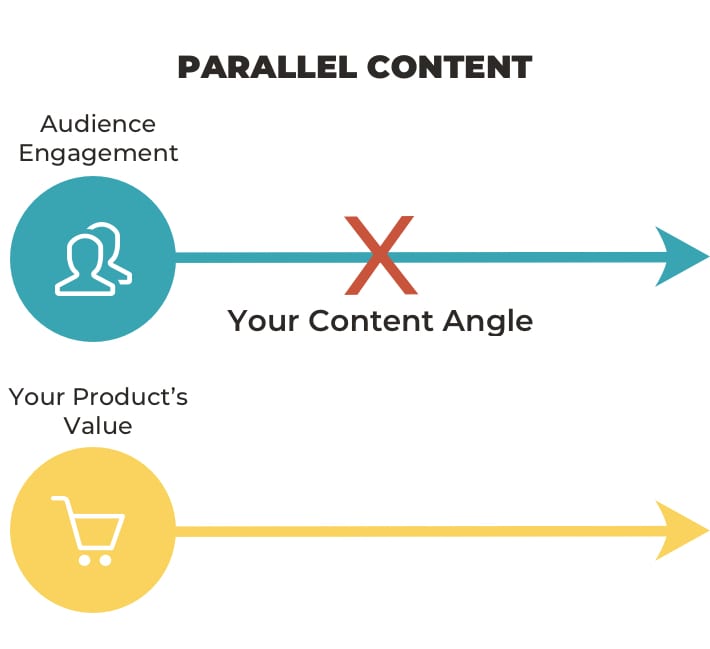
Compare this to content core topics that fulfill the main criteria.
These are topics your audience is interested in that also intersect with your core business. Here, you’re identifying the perfect angles, or points of intersection, between the two.
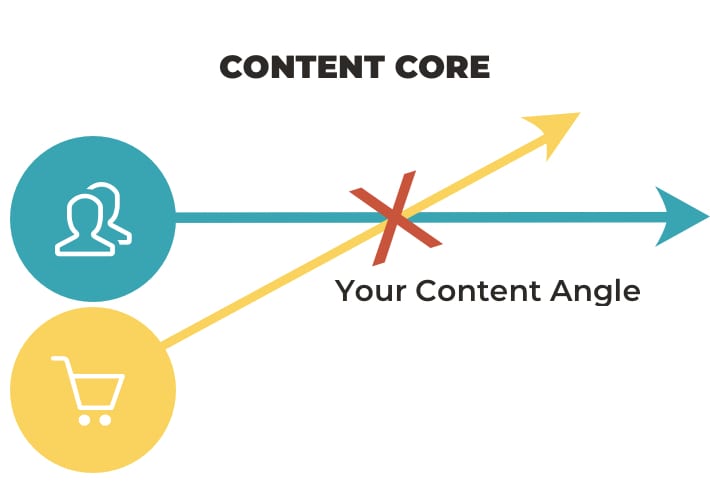
To illustrate, I’ll use one of my favorite examples from my upcoming book.
Pivoting from Parallel Topics to Your Content Core
Imagine you run an ecommerce gardening tools business. Obviously, your audience will be interested in all things gardening.
With this in mind, you start creating content to help your growing audience solve their gardening problems.
You write blog posts, design infographics and create videos around key topics like soil health, planters and keeping pesky rabbits at bay.
Traffic is on the rise, so you decide to go all in on a new guide: “The Ultimate Guide to Common Garden Weeds.”
This topic makes sense, right?
After all, you sell gardening tools, and weeds are public enemy number one. You know this is a topic your audience cares about and involves a serious problem they’re looking to solve.
Checkmate.
So, you sink hours into researching, writing and designing the definitive online guide to weed identification.
You publish and promote this premium piece of content. And, on the surface, things seem to be going great. However, even though you’ve got a steadily increasing stream of backlinks, social media engagement and traffic, sales remain stagnant.
The reason? You have a parallel content problem.
While your ultimate guide adds major value, the content doesn’t directly intersect with your products. You’re helping your audience while starving your business.
Instead, the content core approach would look something like this: “The Ultimate Guide to Killing the 12 Most Common Garden Weeds.”
Throughout the guide, you can show your audience how to kill pesky weeds like crabgrass and dandelions. Now, a light bulb may have just flicked on in your brain, but be careful not to get ahead of yourself.
The obvious thing to do is to repeatedly show them how to kill these weeds with your products.
Instead, ensure your content answers this question without promoting your products: If my readers do exactly what I show them in this piece of content, will they gain the same or a similar benefit to buying my products?
The goal is that your content provides real value without the need to buy your products. But, as you weave CTAs to buy throughout your content, you can position them as the proverbial easy-button.
The content shows them how to get the promised results all on their own. But your products are also there to make their lives so much easier.
Many marketers are hesitant to give away so much value. After all, you’re providing them a path to get results without you.
This seems counterproductive to the entire premise of the content core. But here’s the truth: if you teach people to be successful without you, they’ll be dying to be successful with you.

5 Customer Research Questions to Fuel Your Content Core
The content core certainly isn’t rocket science, but it’s highly effective. This is because it helps you avoid sinking time into those pesky parallel topics.
So, using the content core for every single piece you publish will make your life tremendously easier. It’s also your clearest path to creating stuff as category-defining as Rand Fishkin’s coveted 10x content.
Here’s the deal, guessing what will convert visitors into customers is really hard. You can start with simple customer research and interviews.
To find the words your customers say as they dream up the perfect solution to their problems, ask the following five questions:
- What prompted you to start looking for a solution like {your product}?
- Why did you choose {your product}?
- What is the most significant difference {your product} is making in your business today?
- How would you briefly describe {your product} to someone else?
- What is the single greatest benefit {your product} provides?
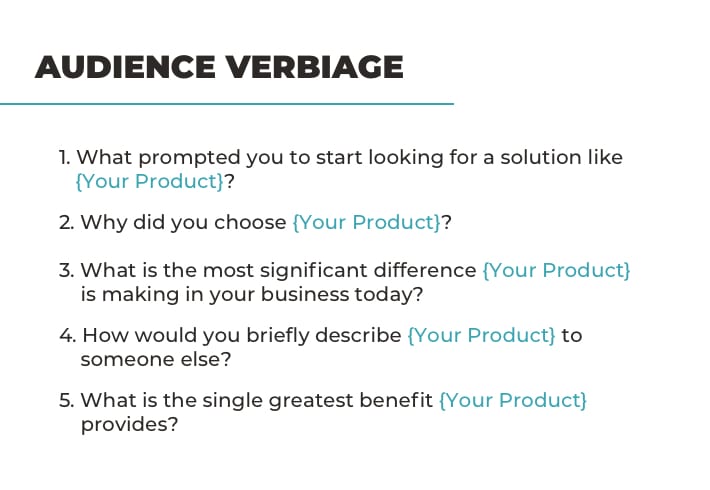
You can conduct interviews over video chat, on a phone call, via email, or even through a survey.
Regardless of the platform you use, the answers to these five questions will give you laser-like focus on revenue-generating content.
Then, have every single person on your marketing team watch, listen to, or read the answers—including new hires during onboarding.
You want your entire marketing team to be equipped with the most effective phrases to fuel their copy, content and CTAs.
It’s also key to understand that these aren’t your typical content marketing questions. Usually, marketers ask questions like “What publications do you regularly read?” Or, “What kind of content do you consume?” And they ask so they can create more stuff in those same veins.
The logic is that if they create similar stuff, they’ll grab attention. By now, though, you can probably see this strategy for the red ocean it is.
Instead, with these questions, we’re going much further. We aren’t simply trying to understand our audience; we’re trying to understand our audience’s customers. There’s a big difference here.
Customers don’t buy because of content; they buy because a given product or service solves a problem. If you can solve problems that help them win more clients, you’re in business.
You’ll also find that understanding those problems and how they talk about them will provide a treasure trove of ideas for content core topics.
Lastly, if it’s tough for you to talk directly with customers, a secondary approach is interviewing your sales team or account managers. The point is to get as close as possible to your customers’ problems and the language they use to describe them.
Putting Your Content Core to Work
Here’s my challenge to you: Don’t publish another piece of content without ensuring it fits within your content core.
If it doesn’t connect the dots between what your customers care about and what you have to offer them, don’t publish it.
Parallel topics and subjects that fall outside of your content core will fail to generate revenue. But the stuff that sits in the sweet spot will prove valuable for both your audience and your company.




